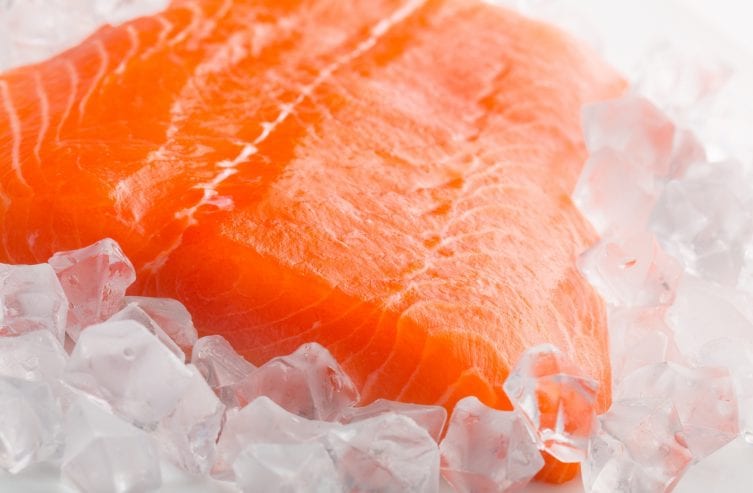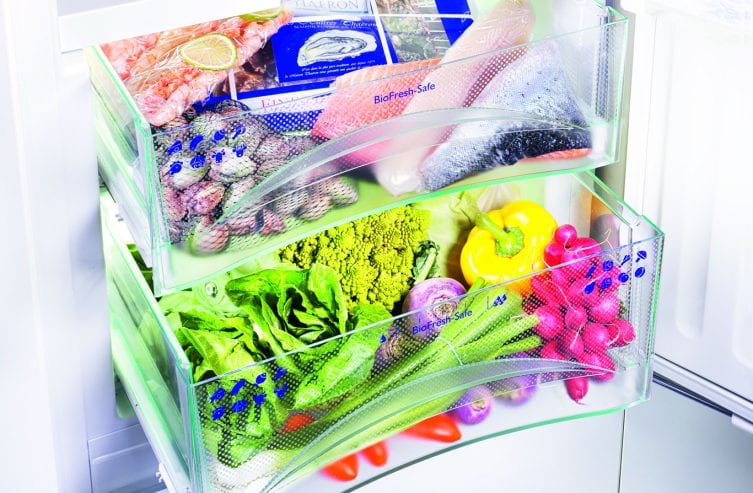Fresh fish and seafood are the basis of many tasty and healthy meals. It is not for nothing that it is recommended to eat fish twice a week! If you buy a daily catch, you best prepare it the same day. Sometimes though it is necessary to keep your fish for a few days. What’s the best way to keep fish fresh and tasty?

Buyer Beware!
The fresher the fish when you buy it, the longer it can be kept at home. Take note of the following points when you are at the fishmonger’s:
- The fish should be nearly odorless, with maybe just a hint of the smell of the sea and / or iodine. The fishier it smells, the more you should stay away.
- The skin should be shiny, firm and elastic.
- Look into the eyes: pale, shiny and transparent eyes are signs of freshness; flat, matte and gray eyes are signs of an older fish.
- The inside of the gills must be bright red and shiny. A yellowish color and mucus indicate fish that is no longer fresh.
- If possible, press your fingertip firmly on the skin. When fresh, the skin should be firm and there shouldn’t be a permanent dent. Flounder should not bend when lifting.
- The seller should keep the fish in ice, not on ice. The cooling will be more consistent that way.

Storing Fish: It’s All About The Right Temperature
Microorganisms affect the freshness of food. Storing products in the refrigerator slows down the activity of microorganisms, ensuring products last longer.
Regular refrigerators are generally not cold enough for the storage of fish, shellfish and crustaceans over a long period of time. The ideal storage temperature is between 28°F (-2°C) and 32°F (0°C). That’s why your fishmonger keeps it on ice!
You can of course lower the temperature in your refrigerator, but this may sometimes be too cold for other products you have in your fridge. Fill a bowl with ice cubes to store the fish and close the bowl with a lid. Place the bowl in the fridge and you should be able to keep most fish for up to two days. Generally, you can keep fresh fish for no longer than one day.
Do you have a Liebherr fridge with BioFresh? Then it’s much simpler. In BioFresh drawers, the temperature is kept at close to 32°F (0°C). This doubles the storage time to two days – ideal for fish lovers!

Freezing Fresh Fish
If your fishmonger has a good offer, or if you are a fanatic fisherman, you sometimes want to store large amounts of fish. Freezing is the best option. To do this, the fish must be as fresh as possible. In addition, make sure it is clean and dry before you freeze it. To prevent the fish from being frozen, you can freeze the fish separated from one another on a freezing tray. Once frozen you can put them in a Ziploc bag or similar. Make sure to label the packaging, with at least the storage date.
Are you freezing more than 4 lbs (2 kg)? Then turn on your Liebherr freezer’s SuperFrost function a few hours in advance. The temperature in the freezer is temporarily reduced. This ensures that your products can freeze as quickly as possible while maintaining quality.
Different species have different shelf lives when frozen:
- up to 4 months:
bass, bone, bream, trout, shrimp, herring, eel, peel, sardines and tonguefish - up to 6 months:
brill, pollock, cod, plaice, sole fillets, whiting, seaweed fillets - up to 8 months:
plaice and turbot fillets.
Defrosting Fish
You can slowly thaw fish in the fridge. Never thaw at room temperature, as this may cause unwanted bacterial growth.
If you are going to use the fish in a stew or soup, you can start processing it when it’s half thawed. Are you going to cook it in a pan or oven? Then it must be completely thawed. An exception to this is breaded fish, which you must start baking directly from the freezer without thawing.